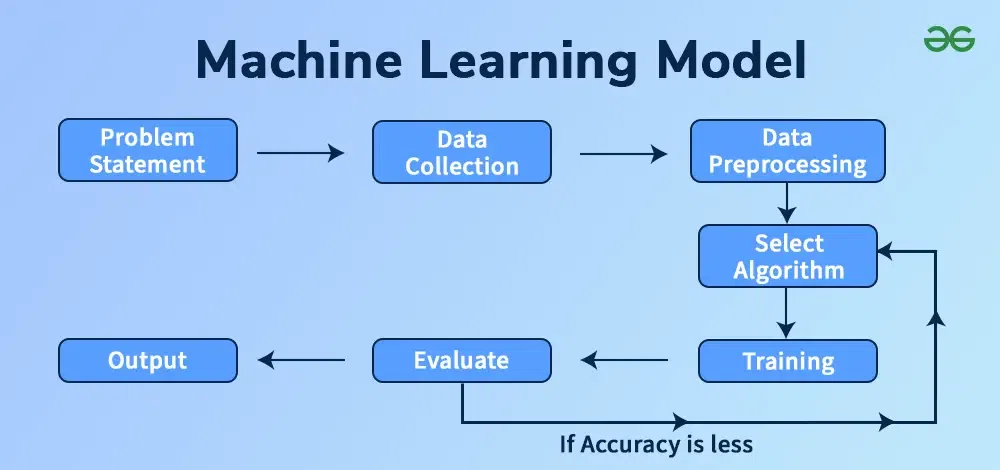ML Models
Machine learning models are algorithms that allow computers to learn patterns from data and make predictions or decisions without being explicitly programmed. These models can be broadly categorized into three types:
1. Supervised Learning Models
- Train on labeled data (input-output pairs).
- Goal: Map inputs to the correct output.
- Common types:
- Linear Regression (for continuous predictions)
- Logistic Regression (for binary classification)
- Decision Trees (rule-based learning)
- Random Forest (ensemble of decision trees)
- Support Vector Machines (SVM) (for classification)
- Neural Networks (deep learning models like CNNs and RNNs)
2. Unsupervised Learning Models
- Train on unlabeled data.
- Goal: Identify patterns or structure in the data.
- Common types:
- Clustering Algorithms (e.g., K-Means, DBSCAN)
- Principal Component Analysis (PCA) (for dimensionality reduction)
- Autoencoders (deep learning for feature learning)
- Generative Adversarial Networks (GANs) (for data generation)
3. Reinforcement Learning Models
- Learn by interacting with an environment.
- Goal: Maximize cumulative rewards through trial and error.
- Common types:
- Q-Learning (value-based learning)
- Deep Q Networks (DQN) (using deep learning for reinforcement learning)
- Policy Gradient Methods (directly optimizing policies)
Each model has its strengths and is suited for specific applications, such as image recognition (CNNs), speech processing (RNNs), or game playing (Reinforcement Learning).
Machine Learning Models
Machine Learning models are very powerful resources that automate multiple tasks and make them more accurate and efficient. ML handles new data and scales the growing demand for technology with valuable insight. It improves the performance over time. This cutting-edge technology has various benefits such as faster processing or response, enhancement of decision-making, and specialized services. In this article, we will discuss Machine Learning Models, their types, How Machine Learning works, Real-world examples of ML Models, and the Future of Machine Learning Models.

A model of machine learning is a set of programs that can be used to find the pattern and make a decision from an unseen dataset. These days NLP (Natural language Processing) uses the machine learning model to recognize the unstructured text into usable data and insights. You may have heard about image recognition which is used to identify objects such as boy, girl, mirror, car, dog, etc. A model always requires a dataset to perform various tasks during training. In training duration, we use a machine learning algorithm for the optimization process to find certain patterns or outputs from the dataset based upon tasks.
...
What is a machine learning Model?
A machine learning model is a program that can find patterns or make decisions from a previously unseen dataset. For example, in natural language processing, machine learning models can parse and correctly recognize the intent behind previously unheard sentences or combinations of words. In image recognition, a machine learning model can be taught to recognize objects - such as cars or dogs. A machine learning model can perform such tasks by having it 'trained' with a large dataset. During training, the machine learning algorithm is optimized to find certain patterns or outputs from the dataset, depending on the task. The output of this process - often a computer program with specific rules and data structures - is called a machine learning model.
...